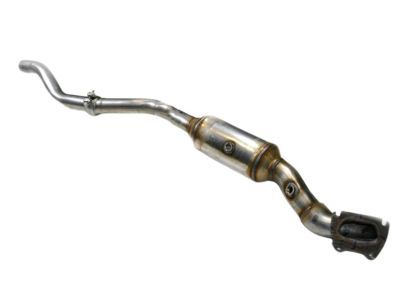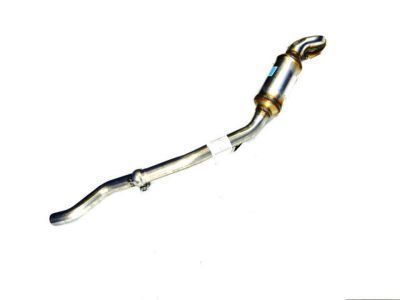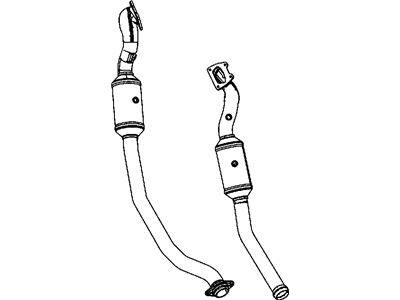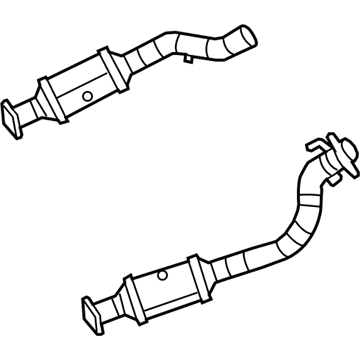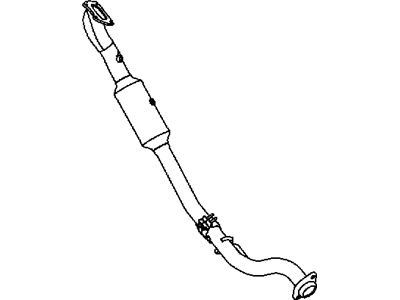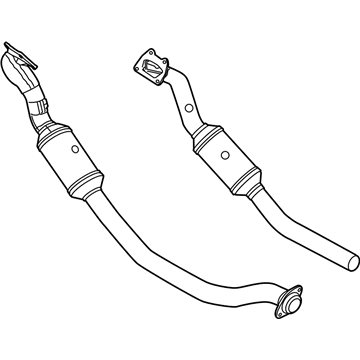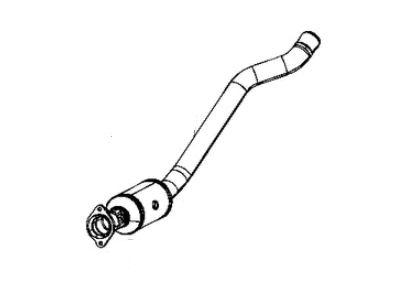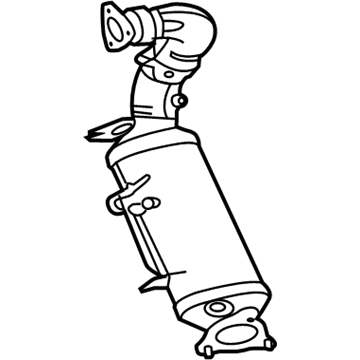×
- Live Chat
- 1-888-511-3595

My Garage
My Account
Cart
Genuine Jeep Grand Cherokee Catalytic Converter
Cat. Converter- Select Vehicle by Model
- Select Vehicle by VIN
Select Vehicle by Model
orMake
Model
Year
Select Vehicle by VIN
For the most accurate results, select vehicle by your VIN (Vehicle Identification Number).
118 Catalytic Converters found
Jeep Grand Cherokee Converter-Exhaust
Part Number: 68037894AF$1680.60 MSRP: $2465.00You Save: $784.40 (32%)Jeep Grand Cherokee Converter-Exhaust
Part Number: 68110125AB$1366.50 MSRP: $2010.00You Save: $643.50 (33%)Jeep Grand Cherokee Exhaust Converter And Pipe To Manifold
Part Number: 68303469AB$1366.50 MSRP: $2010.00You Save: $643.50 (33%)Jeep Grand Cherokee Catalytic Converter Selective Reduction
Part Number: 68243268AA$1088.34 MSRP: $1590.00You Save: $501.66 (32%)Jeep Grand Cherokee Converter-Exhaust
Part Number: 68319267AB$575.34 MSRP: $843.00You Save: $267.66 (32%)Jeep Grand Cherokee CONVERTOR-Exhaust
Part Number: 68036556AF$1475.59 MSRP: $2675.00You Save: $1199.41 (45%)Jeep Grand Cherokee CONVERTOR-Exhaust
Part Number: 68036556AE$1475.59 MSRP: $2675.00You Save: $1199.41 (45%)Jeep Grand Cherokee Exhaust Converter And Pipe To Manifold
Part Number: 68319267AA$575.34 MSRP: $843.00You Save: $267.66 (32%)Jeep Grand Cherokee Front Catalytic Converter
Part Number: 68306092AA$1033.62 MSRP: $1505.00You Save: $471.38 (32%)Jeep Grand Cherokee Exhaust Converter And Pipe To Manifold
Part Number: 68110125AE$1366.50 MSRP: $2010.00You Save: $643.50 (33%)Jeep Grand Cherokee Front Catalytic Converter
Part Number: 68307459AA$2438.70 MSRP: $3575.00You Save: $1136.30 (32%)Jeep Grand Cherokee Converter-Exhaust
Part Number: 68110124AE$1366.50 MSRP: $2010.00You Save: $643.50 (33%)Jeep Grand Cherokee Converter-Exhaust
Part Number: 68410803AC$864.90 MSRP: $1260.00You Save: $395.10 (32%)Jeep Grand Cherokee Converter-Catalytic
Part Number: 68417519AB$1680.60 MSRP: $2445.00You Save: $764.40 (32%)Jeep Grand Cherokee Exhaust Converter
Part Number: 68410802AB$848.94 MSRP: $1240.00You Save: $391.06 (32%)Jeep Grand Cherokee Converter-Exhaust
Part Number: 68169826AB$1275.30 MSRP: $1875.00You Save: $599.70 (32%)Jeep Grand Cherokee Exhaust Converter And Pipe To Manifold
Part Number: 68319266AA$559.38 MSRP: $819.00You Save: $259.62 (32%)Jeep Grand Cherokee Exhaust Catalytic Converter
Part Number: 68436614AC$527.46 MSRP: $774.00You Save: $246.54 (32%)Jeep Grand Cherokee Converter-Exhaust
Part Number: 68110125AC$1366.50 MSRP: $2010.00You Save: $643.50 (33%)Jeep Grand Cherokee Exhaust Catalytic Converter
Part Number: 68329872AB$2244.30 MSRP: $3280.00You Save: $1035.70 (32%)
| Page 1 of 6 |Next >
1-20 of 118 Results
Jeep Grand Cherokee Catalytic Converter
The Catalytic Converter in Jeep Grand Cherokee vehicles is a component that helps in the process of reduction of poisonous exhaust emission to harmless gases. This component is used sparingly with replacement the only usual activity that is carried out on it. Thus, preliminary requirements include avoiding an engine overheating, excluding contact of silicone-based sealants with the converter, and frequent oil change. Such symptoms as poor fuel economy, rough engine idling, rattling or shaking, blue smoke emission from the exhaust, and backfires are typical for a faulty converter. To ensure the required smooth exhaust flow and minimum emission of noxious fumes, the catalytic converter should be installed and operated correctly. Emission reforms have led to the development of different models of this part such as two-way model which has later on developed into the three-way catalytic converter.
Looking for affordable and high-quality auto parts? Then you have already arrived at the proper online shop. We offer all Jeep Grand Cherokee Catalytic Converter at great affordable prices. Moreover, all genuine Jeep Grand Cherokee Catalytic Converter come with a manufacturer's warranty. In the long run, you would realize you have saved a lot of trouble and money with OEM parts from here.
Jeep Grand Cherokee Catalytic Converter Parts Questions & Experts Answers
- Q: How to Replace a Catalytic Converter on Jeep Grand Cherokee?A: Because of a Federally-mandated extended warranty which covers emission-related components such as the catalytic converter, check with a dealer service department before replacing the converter at your own expense. A catalytic converter (or catalyst) is an emission control device in the exhaust system that reduces certain pollutants in the exhaust gas stream. There are two types of converters. An oxidation catalyst reduces hydrocarbons (HC) and carbon monoxide (CO). A reduction catalyst reduces oxides of nitrogen (NOx). A catalyst that can reduce all three pollutants is known as a "Three-Way Catalyst" (TWC). All models covered by this manual are equipped with TWCs. The test equipment for a catalytic converter (a loaded-mode dynamometer and a 5-gas analyzer) is expensive. If you suspect that the converter on your vehicle is malfunctioning, take it to a dealer or authorized emission inspection facility for diagnosis and repair. Whenever you raise the vehicle to service underbody components, inspect the converter for leaks, corrosion, dents, and other damage. Carefully inspect the welds or flange bolts and nuts that attach the front and rear ends of the converter to the exhaust system. If you note any damage, replace the converter. Although catalytic converters don't break too often, they can become clogged or even plugged up. The easiest way to check for a restricted converter is to use a vacuum gauge to diagnose the effect of a blocked exhaust on intake vacuum. Connect a vacuum gauge to an intake manifold vacuum source. Warm the engine to operating temperature, place the transaxle in Park (automatic models) or Neutral (manual models) and apply the parking brake. Note the vacuum reading at idle and jot it down. Quickly open the throttle to near its wide-open position and then quickly get off the throttle and allow it to close. Note the vacuum reading and jot it down. Do this test three more times, recording your measurement after each test. If your fourth reading is more than one in-Hg lower than the reading that you noted at idle, the exhaust system might be restricted (the catalytic converter could be plugged, OR an exhaust pipe or muffler could be restricted). Raise the vehicle and place it securely on jackstands. Spray a liberal amount of penetrant onto the threads of the exhaust pipe-to-exhaust manifold bolts, the clamp bolt that connects the two parts of the crossover pipe and the clamp bolt that connects the pipe behind the right catalyst to the muffler. Wait awhile for the penetrant to loosen things up. On models so equipped, unbolt and remove the skid plate and transmission crossmember, if necessary. While you're waiting for the penetrant to do its work, disconnect the electrical connectors for the upstream and downstream oxygen sensors and remove both oxygen sensors. Unscrew the upper exhaust pipe-to-exhaust manifold flange bolts. If they're still difficult to loosen, spray the threads with some more penetrant, wait awhile and try again. To loosen the clamp that secures the slip joint between the two sides of the crossover pipe between the two catalysts, back off the nut. If it's still difficult to loosen, spray the threads with some more penetrant, wait awhile and try again. If you're removing or replacing the right catalytic converter, you'll also have to loosen the clamp that secures the slip joint between the right exhaust pipe and the pre-muffler. Again, if it's still difficult to remove, spray the threads with more penetrant, then wait awhile and try again. Remove the catalytic converter assembly. Remove and discard the old flange gasket. Installation is the reverse of removal. Be sure to use a new flange gasket and new bolts at each exhaust manifold mounting flange. The manufacturer also recommends using new clamps at the slip joints. Coat the threads of the clamp and the exhaust manifold bolts with anti-seize compound to facilitate future removal. Tighten the fasteners securely.
Related Jeep Grand Cherokee Parts
Browse by Year
2024 Catalytic Converter 2023 Catalytic Converter 2022 Catalytic Converter 2021 Catalytic Converter 2020 Catalytic Converter 2019 Catalytic Converter 2018 Catalytic Converter 2017 Catalytic Converter 2016 Catalytic Converter 2015 Catalytic Converter 2014 Catalytic Converter 2013 Catalytic Converter 2012 Catalytic Converter 2011 Catalytic Converter 2010 Catalytic Converter 2009 Catalytic Converter 2008 Catalytic Converter 2007 Catalytic Converter 2006 Catalytic Converter 2005 Catalytic Converter 2004 Catalytic Converter 2003 Catalytic Converter 2002 Catalytic Converter 2001 Catalytic Converter 2000 Catalytic Converter 1999 Catalytic Converter 1998 Catalytic Converter 1997 Catalytic Converter 1996 Catalytic Converter 1995 Catalytic Converter 1994 Catalytic Converter 1993 Catalytic Converter
